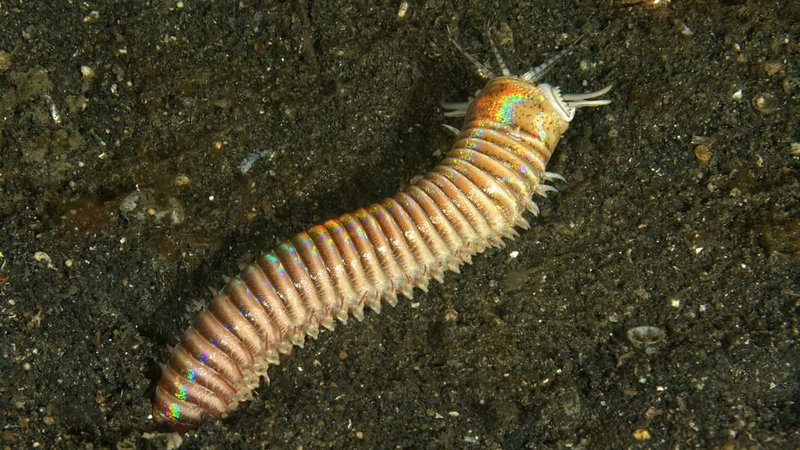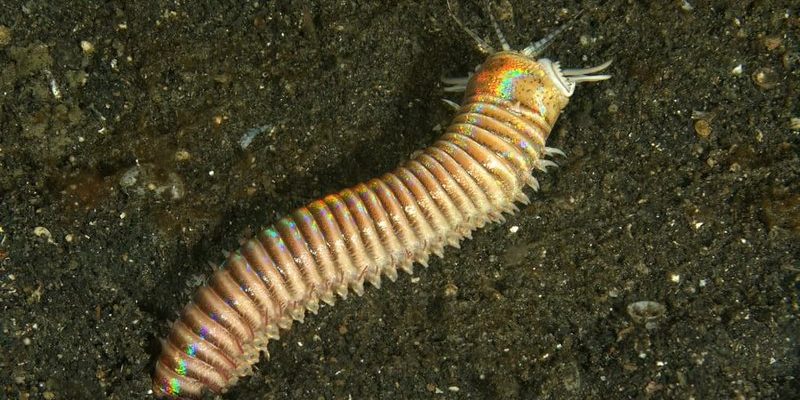
In this guide, we’ll dive into the various species of Bobbit worms around the globe, how to identify them, and why they matter in the larger picture of ocean health. Whether you’re a budding marine biologist or just curious about what lies beneath the waves, you’re in for a treat. Let’s explore the underwater world of these remarkable creatures!
What Are Bobbit Worms?
Bobbit worms, belonging to the family Eunicidae, are a type of polychaete worm. They can grow impressively long, sometimes reaching up to 10 feet! Without going too deep into the science, think of them as nature’s hidden predators. They live in burrows on the ocean floor, using their sharp jaws to snap up unsuspecting prey that comes too close.
These worms can be found in tropical and subtropical waters, often in coral reefs or sandy seafloors. You might be wondering why they’re called “Bobbit worms.” The name comes from an infamous incident involving a woman named Lorena Bobbitt, which you might have heard of. The worms are known for their ability to slice through fish and other prey swiftly, much like that event.
The vibrant colors of Bobbit worms can range from greens to reds and blues, making them both beautiful and terrifying. Their ability to remain hidden while being so colorful is a testament to their evolutionary adaptations in the wild.
Common Species of Bobbit Worms
Bobbit worms aren’t a one-size-fits-all kind of deal; there are several species around the world, each with unique characteristics. Here’s a look at some of the most common ones:
- *Eunice aphroditois*: The most recognized species, found in the Indo-Pacific region. Known for its striking colors and impressive length.
- *Eunice norvegica*: This species thrives in colder waters like the North Atlantic. It might not be as colorful, but it can grow just as long!
- *Eunice viridis*: Commonly found in the Caribbean, this species is known for its bright green hue, resembling a sea creature from a fantasy novel.
Each of these species plays a critical role in their ecosystems, acting as both predator and prey. They help manage populations of smaller marine creatures, maintaining a balanced food web.
How to Identify Bobbit Worms
Identifying a Bobbit worm in the wild can be a bit tricky, especially since they tend to hide in their burrows. However, here are some tips to help you spot them:
1. **Look for their Burrows**: Bobbit worms dig U-shaped burrows in sandy or muddy substrates. If you see suspicious holes while snorkeling or diving, there might be a Bobbit worm nearby.
2. **Coloration**: Most Bobbit worms have vibrant colors, which can be a giveaway. If you see a bright green, blue, or red worm peeking out, take a closer look!
3. **Length**: While many polychaetes can be short, Bobbit worms are known for their length. If you see a long, segmented creature, it might just be a Bobbit worm just waiting to strike!
4. **Movement**: They can extend their bodies out of their burrows and will move quickly if disturbed. Their rapid movements can be quite startling!
Being able to identify these creatures is not just for fun; it contributes to marine conservation efforts by helping hobbyists or professionals recognize healthy habitats.
Habitat and Distribution
Bobbit worms are cosmopolitan—they’re found in many oceans, from coral reefs to deeper seabeds. Their habitat preference often depends on the species. For example, *Eunice aphroditois* thrives in warm, shallow waters, while *Eunice norvegica* prefers colder, deeper waters.
Most Bobbit worms can be found in:
- Tropical and subtropical regions
- Coral reefs
- Muddy or sandy substrates
These habitats provide ample prey and protective environments for the worms to live and thrive. The loss of these habitats due to human activity can have a significant impact on Bobbit worm populations, affecting local marine ecosystems.
The Role of Bobbit Worms in the Ecosystem
Bobbit worms might seem frightening, but they are essential players in their ecosystems. Here’s a closer look at how they contribute:
– **Predators**: They help control populations of smaller fish and invertebrates. Their ambush technique allows them to keep a balance in the food chain, preventing overpopulation of certain species.
– **Prey**: Bobbit worms themselves are food for larger predators like fish and sea turtles. They are part of a complex food web that maintains ocean health.
– **Habitat Engineers**: Their burrowing activities can aerate the seafloor, improving conditions for other marine organisms living in the sediment. This helps create a more diverse ecosystem overall.
Understanding the role of Bobbit worms in the environment reveals how interconnected life in the ocean is. Protecting these creatures also means protecting the ecosystems they inhabit.
Conservation Status
Despite their tough exterior, Bobbit worms face threats just like many marine species. Pollution, habitat destruction, and climate change can all disrupt their populations. Here are some of the key issues they face:
– **Pollution**: Chemicals and waste in the ocean can harm Bobbit worms and their habitats, leading to population declines.
– **Habitat Loss**: Coral reef degradation due to human activity can destroy the homes of these creatures, putting them at risk.
– **Climate Change**: Changes in ocean temperatures and acidification can impact the entire marine ecosystem, including Bobbit worms.
Conservation efforts are essential to protect not just Bobbit worms but all marine life. By keeping oceans clean and advocating for sustainable practices, we can help ensure these fascinating creatures continue to thrive.
Bobbit worms may look like something out of a sci-fi movie, but they’re a vital part of our ocean ecosystems. Understanding their species, habitats, and roles helps underscore the importance of ocean conservation. Whether you spot them diving in the coral reefs or learn about them in documentaries, these creatures are a great reminder of the wonders beneath the waves.
So, next time you think about the ocean, remember the Bobbit worm—an unexpected wonder that contributes to the rich tapestry of marine life. Embrace your curiosity, and let’s protect these incredible creatures together.

